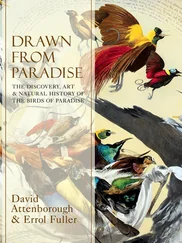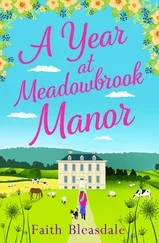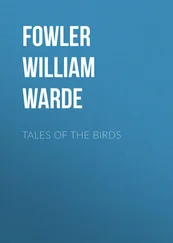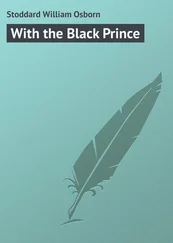William Fowler - A Year with the Birds
Здесь есть возможность читать онлайн «William Fowler - A Year with the Birds» — ознакомительный отрывок электронной книги совершенно бесплатно, а после прочтения отрывка купить полную версию. В некоторых случаях можно слушать аудио, скачать через торрент в формате fb2 и присутствует краткое содержание. Жанр: foreign_antique, foreign_prose, на английском языке. Описание произведения, (предисловие) а так же отзывы посетителей доступны на портале библиотеки ЛибКат.
- Название:A Year with the Birds
- Автор:
- Жанр:
- Год:неизвестен
- ISBN:нет данных
- Рейтинг книги:4 / 5. Голосов: 1
-
Избранное:Добавить в избранное
- Отзывы:
-
Ваша оценка:
- 80
- 1
- 2
- 3
- 4
- 5
A Year with the Birds: краткое содержание, описание и аннотация
Предлагаем к чтению аннотацию, описание, краткое содержание или предисловие (зависит от того, что написал сам автор книги «A Year with the Birds»). Если вы не нашли необходимую информацию о книге — напишите в комментариях, мы постараемся отыскать её.
A Year with the Birds — читать онлайн ознакомительный отрывок
Ниже представлен текст книги, разбитый по страницам. Система сохранения места последней прочитанной страницы, позволяет с удобством читать онлайн бесплатно книгу «A Year with the Birds», без необходимости каждый раз заново искать на чём Вы остановились. Поставьте закладку, и сможете в любой момент перейти на страницу, на которой закончили чтение.
Интервал:
Закладка:
These birds do not leave us as a rule before the first summer visitors have arrived. In the case I have just mentioned, the spring was a warm one, and the very next day I saw the ever-welcome Chiff-chaff, which is the earliest to come and the latest to go, of all the delicate warblers which come to find a summer’s shelter in our abundant trees and herbage.
I use this word ‘warbler’ in a sense which calls for a word of explanation: for not only are the birds which are called in the natural history books by this name often very difficult to distinguish, but the word itself has been constantly used to denote a certain class of birds, without any precise explanation of the species meant to be included in it. Nor is it in itself a very exact word; some of the birds which are habitually called warblers do not warble in the proper sense of the word, 11 11 What this sense is may be guessed from Milton, Paradise Lost , Bk. v. 195 — ‘Fountains, and ye that warble as ye flow Melodious murmurs, warbling tune his praise.’ The word seems to express a kind of singing which is soft, continuous, and ‘legato.’
and many others who really warble, such as the common Hedge-sparrow, have no near relationship to the class I am speaking of. But as it is a term in use, and a word that pleases, I will retain it in this chapter, with an explanation which may at the same time help some beginner in dealing with a difficult group of birds.
If the reader of this book who really cares to understand the differences of the bird-life which abounds around us, will buy for a shilling Mr. Dresser’s most useful List of European Birds , 12 12 Published by its author at 6 Tenterden Street, Hanover Square.
he will find, under the great family of the Turdidae , three sub-families following each other on pages 7, 8, and 9, respectively called Sylvianae , or birds of woodland habits, Phylloscopinae , or leaf-searching birds, and Acrocephalinae , or birds belonging to a group many of the members of which have the front of the head narrow and depressed: and under all these three sub-families he will find several species bearing in popular English the name of warbler . At the same time he will find other birds in these sub-families, which are quite familiar to him, but not as ‘warblers’ in any technical sense of the word; thus the Robin will be found in the first sub-family, and the Golden-crested Wren in the second. But, leaving out these two species, and also the Nightingale, which is a bird of somewhat peculiar structure and habits, he will find four birds in the first sub-family belonging to the genus Sylvia , which are all loosely called warblers, and will be mentioned in this chapter as summer visitors to Oxford, viz. the Whitethroat (or Whitethroat-warbler), the Lesser Whitethroat, the Blackcap, and the Garden-warbler; he will also find two in the second, belonging to the genus Phylloscopus , the Chiff-chaff and the Willow-wren (or Willow-warbler), and two in the third, belonging to the genus Acrocephalus , the Sedge-warbler and the Reed-warbler. Let it be observed that each of these three genera, Sylvia , Phylloscopus , and Acrocephalus , is the representative genus of the sub-family in this classification, and has given it its name; so that we might expect to find some decided differences of appearance or habit between the members of these genera respectively. And this is precisely what is the case, as any one may prove for himself by a day or two’s careful observation.
The birds I have mentioned as belonging to the first genus, i. e. Whitethroat, etc., are all of a fairly substantial build, fond of perching, singing a varied and warbling song (with the exception of the Lesser Whitethroat, of whose song I shall speak presently), and all preferring to build their cup-shaped nest a little way from the ground, in a thick bush, hedge, or patch of thick-growing plants, such as nettles. They also have the peculiarity of loving small fruits and berries as food, and are all apt to come into our gardens in search of them, where they do quite as much good as harm by a large consumption of insects and caterpillars.
Secondly, the two kinds of birds belonging to the genus Phylloscopus , Chiff-chaff and Willow-warbler, are alike in having slender, delicate frames, with a slight bend forward as of creatures given to climbing up and down, in an almost entire absence of the steady perching habit, in building nests upon the ground with a hole at the side , and partly arched over by a roof of dried grass, in feeding almost exclusively on insects, and in singing a song which is always the same, each new effort being undistinguishable from the last. In fact these two birds are so much alike in every respect but their voices (which though unvarying are very different from each other), that it is almost impossible for a novice to distinguish them unless he hears them.
Thirdly, the two species belonging to the genus Acrocephalus , the Sedge- and Reed-warblers, differ from the other two groups in frequenting the banks of rivers and streams much more exclusively, where they climb up and down the water-plants, as their name suggests, and build a cup-shaped nest; and also in the nervous intensity and continuity of their song.
These eight species, then, are the ‘warblers,’ of whom I am going to speak in the first place. They may easily be remembered in these three groups by any one who will take the trouble to learn their voices, and to look out for them when they first arrive, before the leaves have come out and the birds are shy of approach on account of their nests and young. But without some little pains confusion is sure to arise, as we may well understand when we consider that a century ago even such a naturalist as White of Selborne had great difficulty in distinguishing them; he was in fact the first to discover the Chiff-chaff (one of our commonest and most obvious summer migrants) as a species separate from the others of our second group. To give an idea of the progress Ornithology has made during the last century, I will quote Markwick’s note on White’s communication: – ‘This bird, which Mr. White calls the smallest Willow-wren, or Chiff-chaff, makes its appearance very early in the spring, and is very common with us, but I cannot make out the three different species of Willow-wrens, which he says he has discovered .’ 13 13 The three species were the Wood-warbler, Phylloscopus sibilatrix (Bechst.), Willow-warbler, Ph. trochilus (Linn.), and Chiff-chaff, Ph. collybita (Viell.). Markwick declares that he could not distinguish the first of these from the other two.
Nothing but a personal acquaintance – a friendship, as I must call it in my own case – with these little birds, as they live their every-day life among us, will suffice to fix the individuality of each species in the mind; not even the best plates in a book, or the faded and lifeless figures in a museum. You may shoot and dissect them, and study them as you would study and label a set of fossils: but a bird is a living thing, and you will never really know him till you fully understand how he lives.
Let us imagine ourselves taking a stroll into the Parks with the object of seeing these eight birds, not as skeletons, but as living realities. The first to present themselves to eye and ear will be the two species of the second group, which may roughly be described (so far at least as England is concerned) as containing Tree-warblers. From the tall trees in St. John’s Gardens, before we reach the Museum, we are certain on any tolerably warm day to hear the Willow-warbler, which has been the last few years extremely abundant; in Oxford alone there must have been two or three hundred pairs in the spring of 1885. From the same trees is also pretty sure to come ringing the two notes of the Chiff-chaff, which is a less abundant bird, but one that makes its presence more obvious. Let us pause here a moment to make our ideas clear about these two. We may justly take them first, as they are the earliest of their group to arrive in England.
Читать дальшеИнтервал:
Закладка:
Похожие книги на «A Year with the Birds»
Представляем Вашему вниманию похожие книги на «A Year with the Birds» списком для выбора. Мы отобрали схожую по названию и смыслу литературу в надежде предоставить читателям больше вариантов отыскать новые, интересные, ещё непрочитанные произведения.
Обсуждение, отзывы о книге «A Year with the Birds» и просто собственные мнения читателей. Оставьте ваши комментарии, напишите, что Вы думаете о произведении, его смысле или главных героях. Укажите что конкретно понравилось, а что нет, и почему Вы так считаете.












